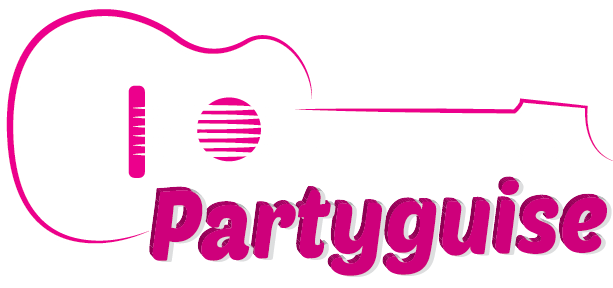Payroll is a complex process that takes time and energy for small business owners or HR staff to complete. Companies can use a payroll solution to help streamline the process and ensure compliance.
These solutions tally digital timesheets, compute taxes, and distribute paychecks via direct deposit or paper checks. They can also file tax documents and reduce compliance risks by tracking government regulation changes.
Features
Choosing the right payroll software for your small business depends on what features are essential to meeting your company’s goals. Whether you want to automate your workflows, improve ROI, or make more informed decisions, the right tool can help you achieve your objectives.
Several factors are to consider, including pricing, add-on payroll features, and integrations. You also need to consider the number of employees you have and how often you pay them—whether they’re hourly, salaried, or tipped. It would also help to look for a system that offers different payment methods, such as direct deposit and cash or check payments.
The right payroll system can save you time and money. Using this tool can assist you in evading expensive errors. For example, missing a tax filing deadline could result in penalties and fines. Moreover, consistency or calculation errors can lead to lost income or unsatisfied employees. Fortunately, the right system can catch these errors and alert you when they occur.
Some providers offer additional services, such as e-filing taxes and filing W2 forms. In addition, some provide specialized options for paying contractors. For example, Square’s contractor payment service costs $5 per payee monthly, including next-day direct deposits and a comprehensive set of accounting tools. On the other hand, QuickBooks has a unique plan for startups that automates tax payments and pays contractors for only $75 each month.
Pricing
Choosing the right small business payroll software requires understanding how you run your business and what features you want to add. To objectively compare prices, look for a pricing option that supports your needs and provides the best value.
Most payroll systems are priced per user, with a monthly base fee and additional cost for each employee being managed. This model is standard across vendors and pricing models, but there are some essential details to consider before deciding.
Payroll software costs are often bundled with other services, such as tax filing, compliance management, and HR tools. While these additional functions may seem optional, they can reduce overall costs and increase the effectiveness of your new payroll system.
Some vendors offer additional services, such as user training and technical support. Include any nominal fees in the total cost of payroll software.
In addition to reducing manual calculations, automated payroll software helps companies avoid costly penalties for late filings and payments. Most solutions include tools to ensure tax compliance, such as automatic calculation and deductions, electronic filing, and the ability to submit state and federal forms. Some vendors even provide employees access to their paystubs and tax forms through self-service portals, which helps reduce administrative burdens.
Integrations
Choosing a system that integrates with other business systems you use, such as your accounting software and time-tracking tools, is essential. This ensures data synchronization eliminates duplicate efforts and improves overall efficiency.
Look for software supporting your current workflows and those you hope to implement. This can help you avoid costly integration projects and reduce the risk of implementing a new solution that disrupts existing workflows or requires more time than anticipated to learn and use.
Whether you employ hourly staffers, salaried employees, or contractors, the right payroll system should provide easy-to-use features that make managing their hours and earnings easier. These include time-tracking apps that allow employees to log in and out as they work, automatic paycheck generation, and digital payslips. Some also offer employee self-service portals that empower workers to access their pay stubs and tax information, reducing administrative burden and improving transparency.
Lastly, the best payroll solutions for small businesses should provide detailed reports and analytics to help you gain insights into payroll expenses and compliance risks. This information can help you optimize budgets, identify opportunities to cut costs and improve ROI. Some providers offer out-of-the-box reports, while others have customizable metrics that you can use to create customized dashboards and charts to analyze trends over time.
Reports
Detailed reports are available with quality small business payroll software to help businesses gain insights into payroll expenses and employee earnings. The information can help managers make more informed financial decisions supporting business goals and growth. Additionally, scalability and growth support allow the software to accommodate an expanding workforce while keeping up with payroll processing demands.
Running payroll is a time-consuming and tedious task. It requires considering multiple tax rates and withholdings, ensuring compliance, and staying updated on the latest federal and state laws. Manually handling these tasks leaves too much room for error, which can result in costly fines from the IRS. Payroll software automates many of these processes and helps ensure accuracy.
In addition to calculating taxes and withholdings, the best payroll software for small businesses makes tracking employee totals and absences easy. Most tools offer a visual dashboard that shows each employee’s net pay, deductions, and benefits at a glance. Some options also include team or department dashboards for a more comprehensive overview.
Choosing the right small business payroll software depends on each organization’s unique needs. When comparing vendors, look for customizable features and a clear breakdown of pricing models (upfront license vs. subscription). It is essential to remember that the tool should be user-friendly so employees can navigate and use it without training or assistance. Some systems, such as SurePayroll, feature a new hire wizard and an easily navigated tax setup page. They offer direct deposit and tax filing for an additional fee.

